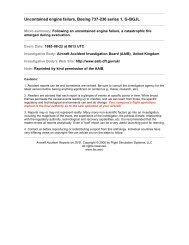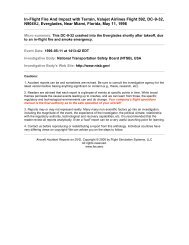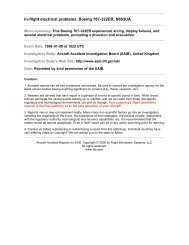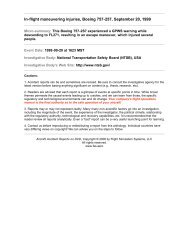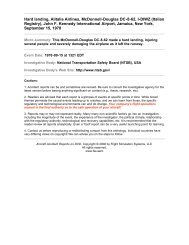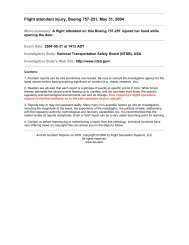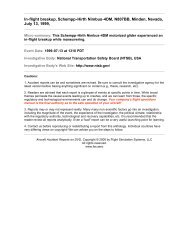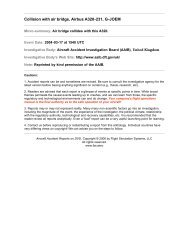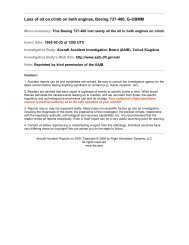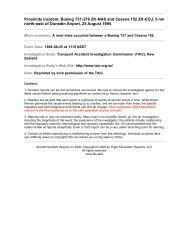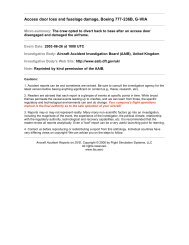Executive Summary - Fss.aero
Executive Summary - Fss.aero
Executive Summary - Fss.aero
Create successful ePaper yourself
Turn your PDF publications into a flip-book with our unique Google optimized e-Paper software.
Both the American Academy of Periodontology and the ROC Academy of<br />
Periodontology had formal documents describing that statistically the direct<br />
relationships<br />
between periodontal infection and cardiac diseases or strokes. They also<br />
pointed out that the risk factor of people who had periodontal infection to have<br />
systemic diseases and cardiac strokes was more than double as compared to people<br />
who did not have periodontal infections. (Reference: “Periodontal Disease As A<br />
Potential Factor for Systemic<br />
Diseases,” Journal of Period ontology, Vol. 69, p. 841-<br />
850<br />
1998.) Furthermore, based on the categorization of periodontal diseases, the<br />
traditional categories were: 1. Gum diseases, 2. Early periodontitis, 3. Mid-level<br />
periodontitis, 4. Serious periodontitis, 5. Recurring periodontitis. If based on the 1989<br />
World Period ontology Congress, there would be eight categories, namely: 1. Gum<br />
diseases, 2. Chronic periodontitis, 3. Invasive periodontitis, 4. Disease<br />
related<br />
periodontitis,<br />
5. Periodontonecrosis, 6. Pus swelling of periodontal structure, 7.<br />
Pathological changes in periodontal make-up, 8. Congenital or acquired periodontal-<br />
related irregularity. (Reference: “Screening and Categorization of Periodonts” Journal<br />
of ROC Academy<br />
of Period ontology, Vol. 3, p. 168 September 2000) This issue<br />
stated<br />
that periodontal infections should not be limited to acute periodontal infections.<br />
Inasmuch as the deceased pilot was diagnosed as having periodontitis in November 8,<br />
1999, the Aviation Medical Center did not have related recommendations. When the<br />
pilot, in the process of the examination, told the center of his periodontal medical<br />
history, the center’s diagnostic result was “non-acute periodontitis, needs to be<br />
pursued further.” The whole thing was based on judgment, without the benefit of<br />
screening or diagnosis; therefore the pilot was not informed that his risk of heart<br />
diseases or cardiac strokes had just gone up.<br />
According<br />
to the final judgment of the cardio-vascular specialist, the high white blood<br />
cell count did not bear any direct relationship to the coronary occlusion.<br />
2.2.4 Impact of high blood fat on the cause of death<br />
Article 22 of Chapter 2 of the “Civil Aviators’ Physical Examination Handbook”<br />
stated very clearly the procedures for examination of high blood fat level, with<br />
cholesterol value in excess of 6 as a threshold level, where, on a case-by-case basis, a<br />
person may be asked to cut down smoking, lose weight, exercise, and go on a low-fat<br />
diet. When cholesterol level exceeded 240, dietary treatment should be recommend by<br />
a dietician.<br />
The doctor of Aviation Medical Center wrote the suggestions for the pilot to watch his<br />
dietary intake as well as having a regular exercise regimen. However, there was no<br />
31



